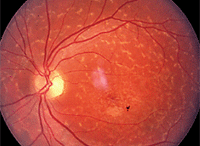On November 22, the FDA permitted Advanced Cell Technology, Inc. (ACT) to initiate the first clinical trial that will test the effect of human embryonic stem cells on patients with Stargardt’s macular dystrophy (SMD). This decision immediately removes the hold that the FDA had placed on the Phase I/II multicenter trial because of the use of human embryonic stem cells.

The FDA removed the hold on human embryonic stem cell therapy for use in Stargardt’s macular dystrophy.
This will be the first-ever U.S. clinical trial in eye care to use human embryonic stem cells.
It is a prospective, open-label study that is designed to determine the safety and tolerability of retinal cells that are derived from human embryonic stem cells following transplantation in patients with advanced SMD. A total of 12 patients will be enrolled in the study at several research sites, including the Jules Stein Eye Institute at UCLA and the Casey Eye Institute in Portland, Ore.
“There is currently no treatment for Stargardt’s disease,” says Robert Lanza, M.D., ACT’s chief scientific officer. “Using stem cells, we can generate a virtually unlimited supply of healthy retinal pigment epithelium cells, which are the first cells to die off in SMD and other forms of macular degeneration.”
“In rats, we’ve seen 100% improvement in visual performance over untreated animals without any adverse effects. Our studies showed that the cells were capable of extensive rescue of photoreceptors in animals that otherwise would have gone blind,” Dr. Lanza says.
The FDA’s decision will fundamentally change how the medical community manages and treats such degenerative diseases, says William M. Caldwell IV, ACT’s chairman and chief executive officer. “With the initiation of this clinical trial, the field of regenerative medicine is poised to take embryonic stem cell therapies from the realm of nebulous potential to that of tangible and real treatments that will make a significant difference in the lives of millions of people worldwide,” he says.

